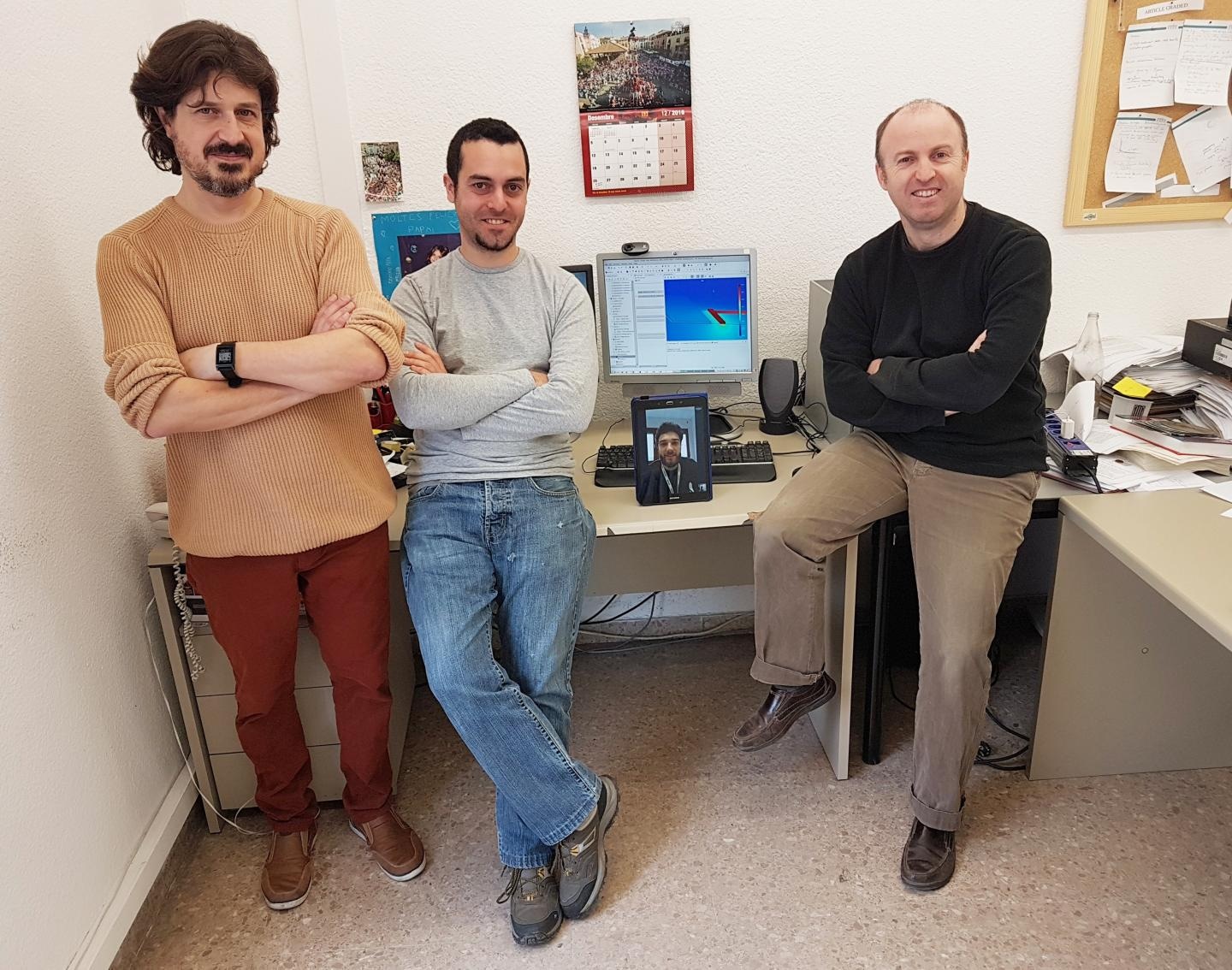Jan 24 2018
In a paper featured last week in the journal 'Nature Communications', researchers from the Department of Physics and the Department of Electronics Engineering at the UAB and from the Birck Nanotechnology Center at Purdue University (USA), examined the heating of small current lines positioned on top of a silicon substrate, simulating the behavior of current transistors.
 Researchers at the UAB, in collaboration with Purdue University (USA), have shown that heat flow has a behavior similar to a viscous fluid when studied at nanoscale. (Image credit: UAB)
Researchers at the UAB, in collaboration with Purdue University (USA), have shown that heat flow has a behavior similar to a viscous fluid when studied at nanoscale. (Image credit: UAB)
This work explains how these metal lines heat up in a way that cannot be described with the laws ruling heat behavior in everyday experience. A theoretical model created by students Pol Torres and Àlvar Torelló, under the administration of UAB professors Francesc Xavier Àlvarez and Xavier Cartoixà, has explained the experimental observations; demonstrating that heat flow finds it tough to make a sharp turn when proceeding from metal to the substrate, similar to what could take place when a viscous fluid exits a tube. This phenomenon makes it a lot more complicated for the metal line to cool and thus its temperature increases to values which cannot be explained with present day models.
During operation, the most active parts of an electronic device could accumulate increased amounts of thermal energy in extremely localized zones, known as Hot Spots. This energy accumulation can be extremely detrimental to the accurate functioning of the device and represents a bottleneck restricting the performance of current processors.
This discovery makes room for better thermal management in electronic devices because the projected description represents a major enhancement over the models with which device engineers presently work, based on Fourier's law. These results signify a new positive test of the theory of Extended Thermodynamics, produced in the 1990s by UAB professors David Jou and José Casas.
Reference article:
Amirkoushyar Ziabari, Pol Torres, Bjorn Vermeersch, Yi Xuan, Xavier Cartoixà, Àlvar Torelló, Je-Hyeong Bahk, Yee Rui Koh, Maryam Parsa, Peide D. Ye, F. Xavier Àlvarez and Ali Shakouri, Full-field thermal imaging of quasiballistic crosstalk reduction in nanoscale devices. Nature Communications 9, Article number: 255 (2018)